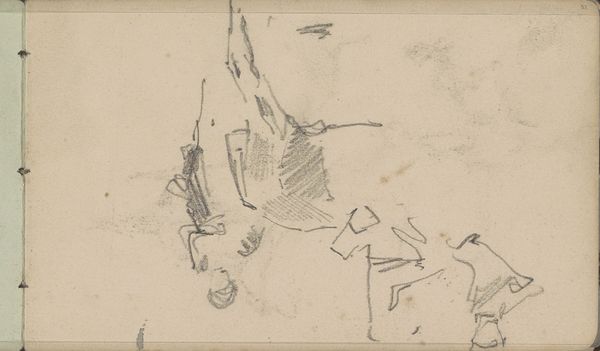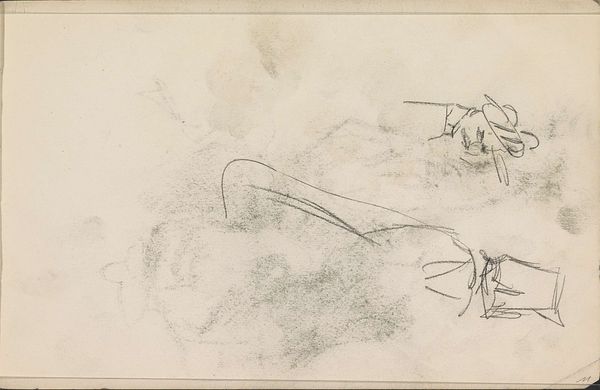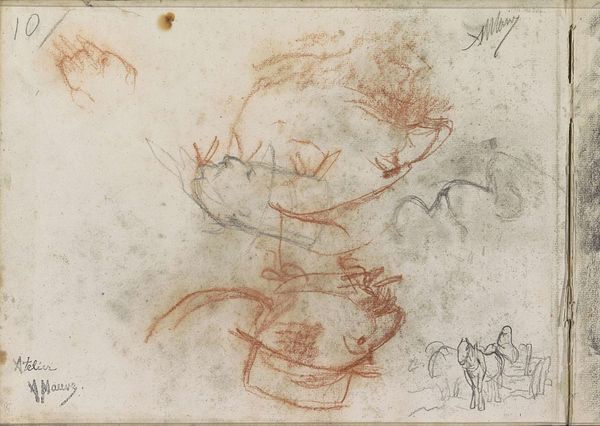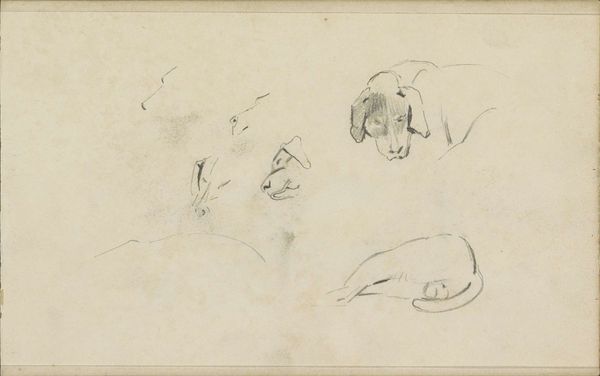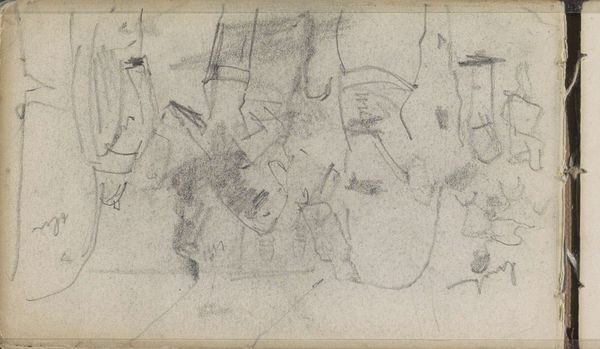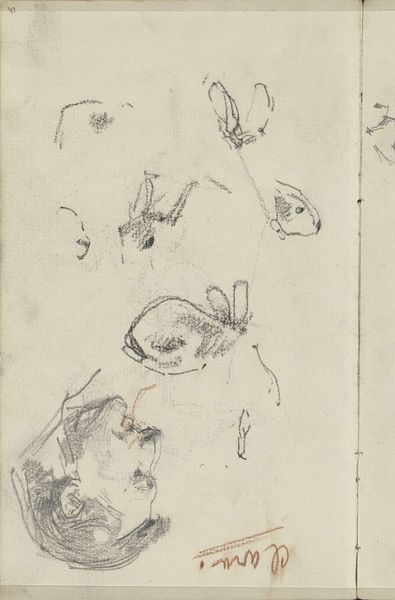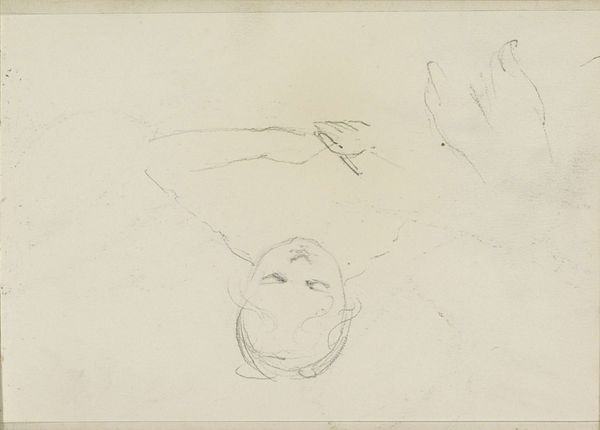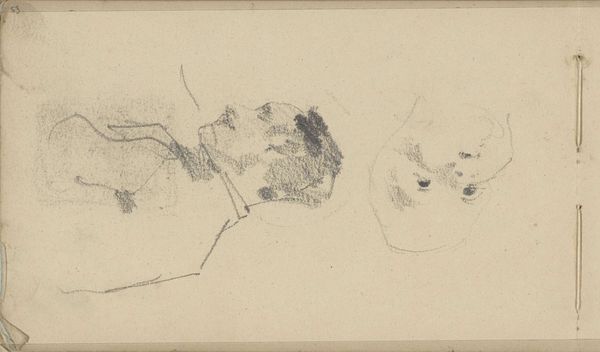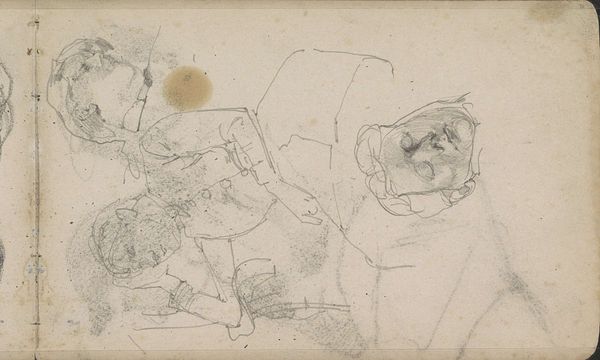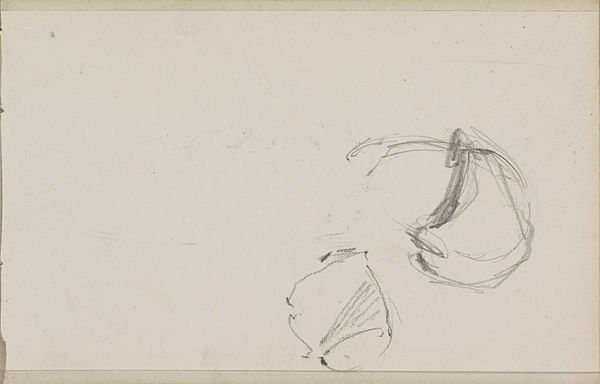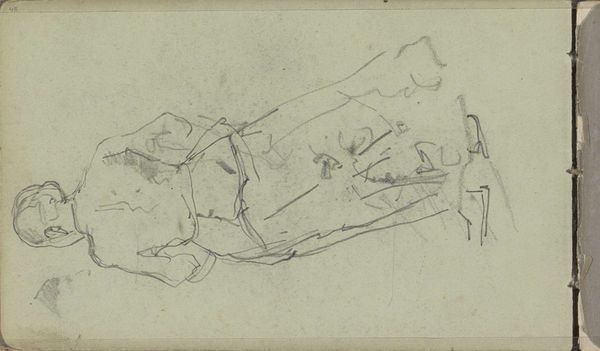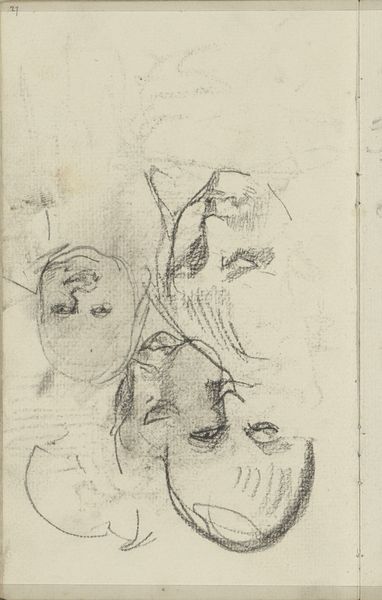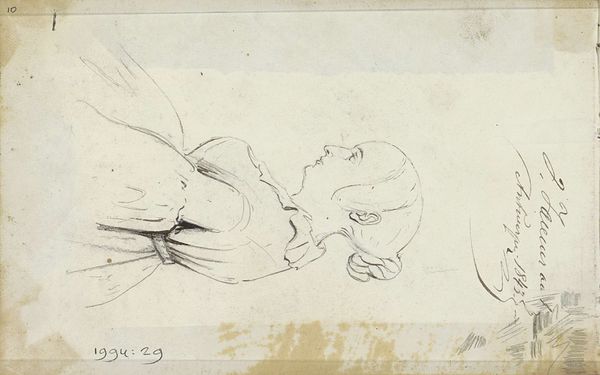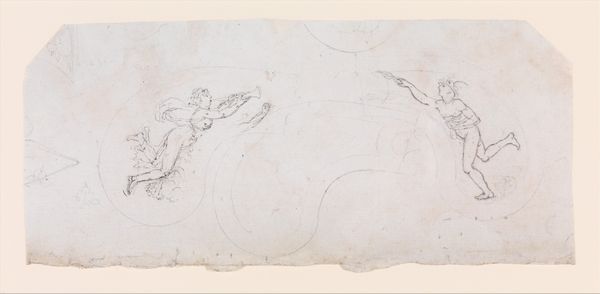
Studies van een poon en een schets van een kameel 1876 - 1924
0:00
0:00
drawing, pencil, graphite
#
drawing
#
pencil sketch
#
pencil
#
graphite
#
academic-art
#
realism
Dimensions: height 239 mm, width 287 mm
Copyright: Rijks Museum: Open Domain
Art Historian: Welcome. We're looking at Gerrit Willem Dijsselhof’s drawing, "Studies van een poon en een schets van een kameel," created sometime between 1876 and 1924. It's here at the Rijksmuseum. Art Historian: It feels fragmented, doesn't it? Like a page torn from a naturalist's sketchbook. The muted graphite captures a certain clinical detachment, yet the eyes of the fish... they hint at something more. Art Historian: Dijsselhof, known for his later involvement in decorative arts, here adopts an almost scientific illustrative approach. Pencil and graphite drawings such as this were integral to the academic training artists received at the time. Art Historian: There is something profoundly symbolic about combining studies of such different animals; what unifying principle guided his choice? Fish symbolize adaptability, the unconscious; a camel signifies endurance, passage through barren lands. The juxtaposition evokes the multifaceted nature of existence. Art Historian: Interesting. Or perhaps Dijsselhof simply found these subjects at hand. Animal studies were a common exercise. Though, granted, a camel seems a rather unusual subject in the Netherlands. Travel abroad might explain that. Art Historian: It's not just the subjects but how they're rendered. See how the fish's eyes are emphasized, large and somewhat haunting? Fish often appear in art to evoke subconscious motivations, a return to primeval waters. Is there an intentional undertone here? Art Historian: The 'undertone,' as you call it, could reflect a rising interest during this period, with burgeoning advancements in zoology. Perhaps it provided some impetus for representing animals, a burgeoning popular enthusiasm and increased social awareness of the natural world. Art Historian: Even technical skill is laden with symbolic intent, right? To reproduce nature flawlessly, what is he trying to mirror back to his viewers? It feels almost reverential, but not spiritual… instead… scientific. Art Historian: Well, whatever his reasons, this work displays technical skill, a careful hand at rendering forms with graphite. It certainly holds a place within Dijsselhof’s development as an artist navigating diverse styles during his career. Art Historian: Thank you. The way the artist juxtaposes studies reveals the interconnectedness of all living things, bridging disparate worlds through form. It is amazing what even the humblest sketch might reflect, both observed, and unseen. Art Historian: Indeed, something to consider the next time we encounter animal imagery – here in a museum, or anywhere else.
Comments
No comments
Be the first to comment and join the conversation on the ultimate creative platform.
